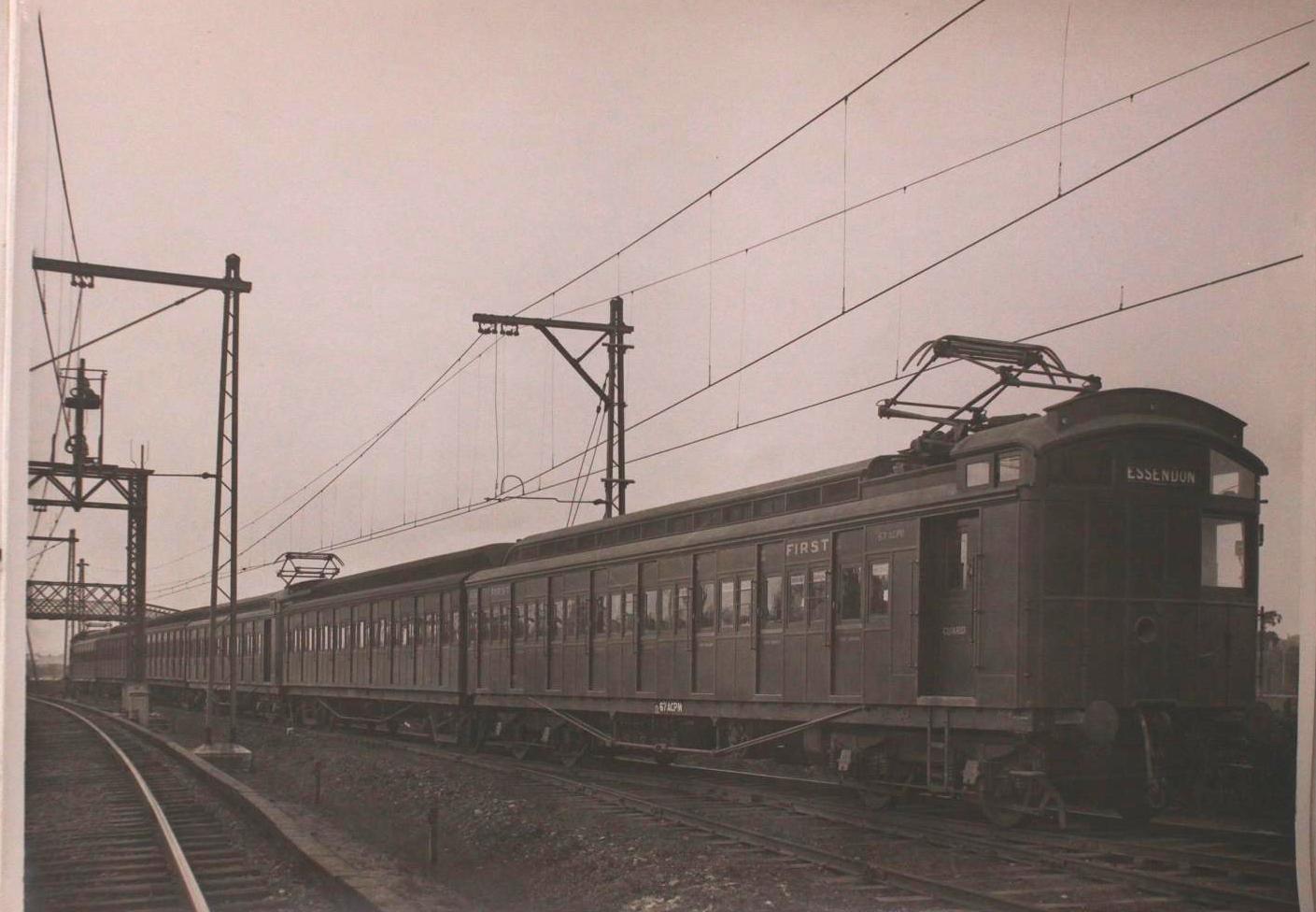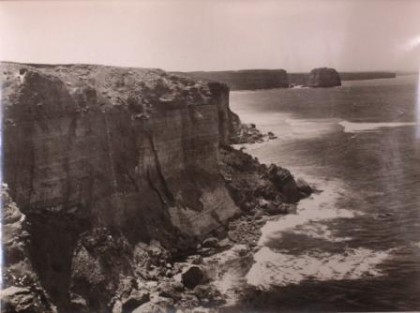Author: Sasho Talevski
The Electrification of Melbourne's Suburban Railway Network
“Photo Album: Electrification Scheme”

VPRS 12397/P1 – Unit 1, Image of Six Car Standard Train
In 1919 the first Suburban Electric Train Services started in Melbourne. At the time Melbourne was the largest city in Australia, and was the first to electrify its Train Services. By 1923 most of the Suburban Train Services were operated by Electric Trains. It was an immediate success, with patronage soaring as a result of the quicker travel times and increased services which had all been achieved at a reduced cost.
This was the conclusion of a large investment by the Victorian Railways into the new Electric Traction Technology which was to replace the Steam Train Passenger Services of the time. The Electrification Scheme adopted was from the recommendations of a Report in 1912 which had been noted by a UK Electrical Engineer by the name of Charles Merz. The Scheme was to be the first application of 1,500 V DC using overhead current collection in the World at the time, and boasted the largest Power Station in the Southern Hemisphere.
This series is a photo album which contains photos relating to the electrification of the Melbourne Suburban Railway System. The subjects of photographs include buildings such as the Jolimont as well as Caulfield Sub-Stations, the Newport Power Station, promotional shoots of Victorian landmarks and countryside, over line bridges, and track structure.

VPRS 12397/P1 - Unit 1, Image of Port Campbell
Work on the electrification of the railways commenced c.1912; however there are no dates on the records in this series. The series date range is an estimation which has been established due to similarities between this series as well as other promotional or publicity material prepared by the Victorian Railways c.1919. The photographs have been bound together in an album and labelled.
Series:
VPRS 12397 Photo Album: Electrification Scheme
Creating Agency:
Agency currently responsible:
VA 2984 Public Transport Corporation, 1999 – cont
Material in the Public Record Office Victoria archival collection contains words and descriptions that reflect attitudes and government policies at different times which may be insensitive and upsetting
Aboriginal and Torres Strait Islander Peoples should be aware the collection and website may contain images, voices and names of deceased persons.
PROV provides advice to researchers wishing to access, publish or re-use records about Aboriginal Peoples
